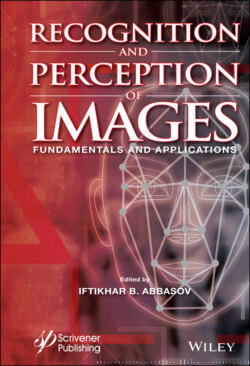Читать книгу Recognition and Perception of Images - Группа авторов - Страница 11
Оглавление
Preface
Visual information is predominant in everyday human life. The use of recognition systems in the different fields of modern civilization subsistence is becoming the order of the day. These systems both ensure social security and make the living environment of the community more comfortable. They became available for each of us, so we no longer look surprised by the faces recognition capability ensured by our smartphones.
The first chapter analyses the issues relating to imagery recognition and conducts a survey of modern tendencies. The peculiarities of images processing and perception are discussed, and the conditional neural processes in brain and psychological manifestations are described.
The issues of compositional analysis carried out in the course of processing and recognition of different purpose images are envisaged in the second chapter. The stages of image composition analysis and detection of differential characteristics on the basis of current methods are represented.
The third chapter is dedicated to the study of perception mechanism and creation of image solution in the course of designer project activities. The color, form and composition as elements of the artistic work are sign-symbolic means of the image-bearing expression.
The fourth chapter deals with issues of associated perception of conceptual space structures. The associative simulation of environmental objects and structures is considered with due regard to perception psychology.
The informative presentation allocation technology necessary for the basic recognition task is studied in the fifth chapter. The face recognition method that is stable regardless of lighting, make-up and masking is represented.
The sixth chapter is dedicated to the development of methodology and software implementation of algorithms for the intellectualized processing of Internet meme flows and detection of their social and political influence in the social network.
The new imagery perception and recognition methods as well as algorithms based on the mathematical approach to the granulating of satellite data are pointed out in the seventh chapter. The algorithms for the large classes of data with the spectral portraits of different signals are introduced.
The methods of reverse radio detection and ranging carried out with the synthesized aperture are described in the eighth chapter. The process of signal generation after the complex reflection from the object is analytically described.
The new method to increase the resolution of multispectral images due to the use of basic spectra is offered in the ninth chapter. The radiometric signals are redistributed in the image subpixels to improve the general physical resolution of the image.
The tenth chapter deals with the theoretical and technological aspects of aerospace imagery processing and interpretation. The peculiarities of aerospace images, methods of their digital representation and interpretation of these images by means of current artificial neural networks are described.
The partition of visual information into the constituent parts by means of the artistic-compositional analysis may be used by the computer vision as well as in the course of analysis and recognition of artistic works. The combination of artistic peculiarities with modern recognition technologies may be also implemented for the test systems designed for the diagnostics of human well-being.
The book may be useful for students, engineers and researchers working in the field of imagery processing, recognition and perception.
Editor
Prof. Iftikhar B. Abbasov
